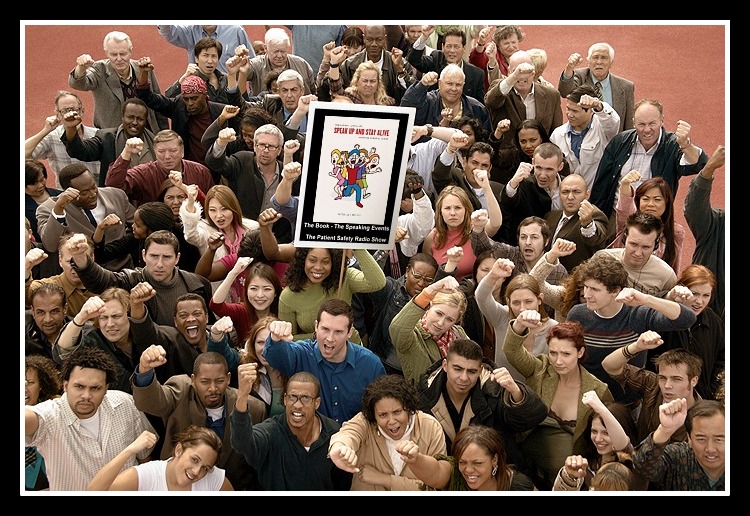Association for Patient Experience – Does Anyone Color Anymore?
Topic: Can medicine re-capture the simplicity of the lost art of coloring as a way to improve the patient experience?
Purpose: To entice the reader to recall the joyful memories of their youth and impart those warm feelings into their everyday encounters with patients.
Conclusion: Thoughtful recollection and reconnecting with simpler times may improve the experience for both patient and provider.Last week, my mom shared a newspaper article about a local hobby-craft store that is closing after 67 years in business, because no one comes in any longer to buy craft-making items. Children and adults used to take the time to build model cars, airplanes, and train sets. I remember how my younger brother spent much of his time as a kid building models in the basement, making each one unique and special by taking great pride in the paint process and the perfect placement of the decals.This ‘end of an era’ news made me think about how my friends and I used to color. Oh, how I loved crayons! Does anyone even have a box of crayons anymore? No, I’m not talking about the cheap dollar store waxy ones. I’m talking about the wonderful old-timey Crayola crayons. Ah – the smell of a new box of Crayolas.
One Christmas I received a long box of 72 crayons from my grandmother. The names on the wrapper were so simply descriptive: midnight-blue, burnt orange, blue-grey, lemon yellow, raw umber, and forest green. How much time did I spend just admiring the subtle differences between the colors? And the decisions, oh my! Should I color the sky a violet blue or midnight blue? Dare I add a splash of pink? As I recall, I spared the pink as I didn’t want to ruin the perfectly sharp point and the untorn paper.
And what about coloring books? Where are they?
Does anyone color anymore?
My friends would come over and color all afternoon – sometimes each with our own coloring books. Often we’d share the page in mutual silence. But mostly we’d chatter away with conversations that spanned “what’s for dinner” to” imagine if you could fly?” We got to know one another in a very powerful and connecting way that wasn’t contrived, rushed, planned, or monitored. It just was.
Fast forward to a few weeks ago. All of these memories of craft stores, model airplanes, crayons and coloring converged as I interviewed a very interesting gentleman for my radio programs and we discussed how best to improve the patient experience. And it hit me – no one colors anymore.
We as a society have rapidly evolved into instant gratification. Want to know the answer to something right now, without thinking? Google it or ask Siri – oops – I mean the new Cortana. No longer do we stop for a moment to figure it out. No longer do we reach out to someone else for an explorative conversation. Our imaginations are squashed by social and technological expectations – by the mad rush of daily life and limited time. “Sorry patient – can’t talk to you, can’t look at you and can’t listen to you. I have two other patients booked at the same time and have to chronicle this appointment on my iPad.”
And the more technology takes over our minds, the more we prefer to look at things the way they are ‘supposed’ to be rather than allowing our poor, stifled yet still creative minds to take a tour around the page and wander over imaginative possibilities. “Sorry patient – it’s allergy season. Everyone in here today is complaining about the same thing. Take this and check back in three weeks.” And yes, these were the exact words my doctor uttered to me last spring as he feverishly typed into his computer.
This paralyzed ability to think in possible colors can block the creative thoughts so necessary for all aspects of life – especially medicine. Has medicine lost that childlike quality that frees us to discover and explore each patient as if a new page of an old coloring book? Can we possibly reconnect to a sense of simplicity we have temporarily lost – to be uninhibited by past bias, corporate expectations, professional climb, or political foolishness?
Perhaps medicine today needs to reconnect with a box of crayons. To slow down – to breathe – to touch – to quietly appreciate the silent but powerful colors that make up each individual patient – the other person who is coloring on the same page – to openly share in a trusting way to explore everyone’s feelings, hopes and preferences – both provider and patient. Simply put – that is the patient experience. It’s simple. It’s basic. It’s human, and we shouldn’t have to measure it with patient satisfaction surveys, scores, incentives, and penalties.
But sadly – as the closing of our local hobby store indicates – we and especially our youth are not allowed this mental freedom anymore. Give a seven year old a box of crayons and you’ll surely get screams. “What – no smartphone?” Wow! For me, cutting edge was the crayon sharpener built into the box.
Medical school training? No – I don’t think they use crayons.
Does anyone color anymore?
Well, let me say this. I was recently blessed with my first grandchild and guess what? This gran’s buying crayons.
Pat Rullo is the author of the book – Speak Up and Stay Alive, a patient advocate hospital survival guide – the result of several years of research and interviews prompted by real life healthcare mishaps. Pat speaks nationally on the subject – educating groups, clubs, organizations, and healthcare and hospital providers.As the hostess and producer of her nationally syndicated radio shows, Speak Up and Stay Alive Patient Safety Radio, Pat stresses the need for patients to become educated and providers to welcome patient involvement and engagement.

